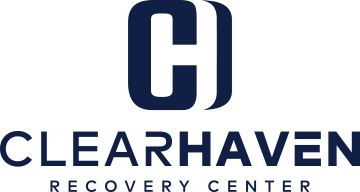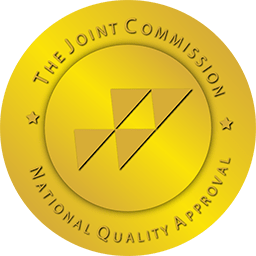When individuals transition from prison or jail back into society, they often face numerous challenges that can hinder their successful reintegration. This is where a halfway house plays a crucial role. A halfway house, also known as a sober living facility or recovery house, provides transitional housing and support services to help individuals navigate this critical period in their lives. In this comprehensive guide, we will explore the purpose of a halfway house, what it entails, who can benefit from it, and the benefits of living in one. Whether you or a loved one is seeking support in addiction recovery, understanding the role of a halfway house is essential.
What Is a Halfway House?
A halfway house, also referred to as a sober living facility or recovery house, is a type of transitional housing program designed to assist individuals in early recovery. These homes provide a safe and supportive environment for residents as they transition from more structured environments, such as inpatient treatment programs or correctional facilities, back into society.
Structure and Support in Early Recovery
Halfway houses offer structure and support to individuals in early recovery by providing a stable living environment. Residents of halfway houses have typically completed an inpatient treatment program and are looking to continue their journey of sobriety in a less structured setting. These homes allow individuals to heal and rebuild their lives with the support of like-minded peers and professional staff.
Abstinence and Accountability
Residents of halfway houses are expected to follow specific rules and regulations, which often include abstaining from drugs and alcohol, adhering to a curfew, and participating in house chores. These expectations create a sense of accountability and promote personal responsibility, essential factors in maintaining sobriety.
Community and Mutual Support
One of the significant advantages of living in a halfway house is the sense of community and mutual support it fosters. House meetings provide residents with a platform to share their experiences and support one another. These interactions can be instrumental in building a strong support network and combating feelings of isolation often experienced during early recovery.
What Can You Bring to a Halfway House?
When moving into a halfway house, it’s essential to know what items you can bring to make your stay more comfortable. While each facility may have its specific guidelines, there are general recommendations for personal belongings that are typically allowed in halfway houses.
Essential Items to Bring
Here are some essential items you should consider bringing with you to a halfway house:
- Toiletries: Remember to pack toothbrush, toothpaste, deodorant, and other personal hygiene products.
- Bedding: Bring your pillow, sheets, and a blanket to ensure a comfortable sleep environment.
- Clothing: Pack enough clothing for a week, including underwear, socks, and weather-appropriate attire.
- Medications: If you have any prescription drugs that you take regularly, make sure to bring an adequate supply.
- Personal Items: Consider bringing personal items that provide comfort, such as a photo of your family or loved ones, a favorite book, or any other sentimental belongings.
- Necessary Documents: It’s crucial to have identification documents like your ID and Social Security card readily available.
While these items are recommended, it’s essential to check with the specific halfway house you are planning to stay at for any additional guidelines or restrictions.
How Does a Halfway House Work?
Halfway houses are designed to provide a supportive and structured environment for individuals transitioning from one stage to another, such as being released from prison or completing addiction treatment. These homes offer a range of services and resources to help residents navigate their recovery journey successfully.
Transitioning and Reintegration
A significant aspect of a halfway house’s function is to assist individuals in transitioning and reintegrating into society. Whether someone is coming from a correctional facility or completing a substance abuse treatment program, a halfway house provides a stepping stone towards independent living while still receiving support and guidance.
Structure and Accountability
Halfway houses offer a level of structure and accountability that helps residents maintain sobriety and make positive life changes. The specific rules and regulations, such as mandatory drug and alcohol testing, curfews, and participation in house meetings, create a framework for residents to develop healthy habits and routines.
Support and Guidance
The staff members at a halfway house are trained to provide support and guidance to residents, helping them overcome challenges and work towards their recovery goals. They offer a range of services, including counseling, case management, life skills training, and access to community resources, to ensure residents have the tools they need for success.
The Benefits of Living in a Halfway House
Living in a halfway house can bring numerous benefits to individuals in recovery. These benefits extend beyond providing a safe and supportive environment and can positively impact various aspects of one’s life.
Enhanced Mental Well-being
Residents of halfway houses often report feeling happier and more mentally stable compared to when they were actively using drugs or alcohol. The structure and support provided by these homes contribute to improved mental well-being by offering a sense of purpose, routine, and a supportive community.
Improved Physical Health
Addiction can take a toll on an individual’s physical health. However, by embracing sobriety, residents of halfway houses often experience improvements in their physical well-being. With access to nutritious meals, regular exercise, and a substance-free lifestyle, individuals can regain their physical health and vitality.
Rebuilding Relationships
One of the most significant challenges individuals face during addiction is the strain it places on their relationships. Halfway houses provide an opportunity for residents to repair damaged relationships and build new, healthy connections. The supportive environment and guidance from staff members can help individuals navigate the complexities of rebuilding relationships while in recovery.
Skill Development for Life in Recovery
Many halfway houses offer programs and services aimed at helping residents develop essential life skills. These skills may include anger management, financial planning, job readiness, and effective communication. Building these skills can provide a solid foundation for a successful life in recovery, equipping individuals with the tools they need to navigate challenges and make positive choices.
Who Can Benefit From a Halfway House?
Halfway houses can be a valuable resource for various individuals seeking support and stability during their recovery journey. The following are some examples of those who can benefit from residing in a halfway house:
Individuals in Early Recovery
Individuals who have recently completed an inpatient treatment program and are transitioning back into society can greatly benefit from the structure and support provided by a halfway house. These homes offer a safe and supportive environment to continue the recovery process while gradually reintegrating into everyday life.
Individuals with Substance Abuse Disorders
Those struggling with substance abuse disorders can find solace in a halfway house. These homes offer a substance-free environment and a community of individuals who understand the challenges of addiction. Residents can receive ongoing support and guidance from staff members trained in addiction recovery.
Individuals with Mental Health Issues
Some halfway houses specialize in catering to individuals with co-occurring substance abuse and mental health disorders. These homes provide comprehensive support and resources tailored to address the unique needs of individuals dealing with mental health issues alongside addiction.
Individuals Reentering Society
For individuals who have recently been released from prison or correctional facilities, a halfway house can offer a vital bridge between incarceration and independent living. These homes provide the necessary support and structure to help individuals navigate the challenges of reentering society while reducing the risk of relapse or recidivism.
Conclusion
Understanding the purpose and significance of a halfway house is crucial for individuals in early recovery or those seeking support in their journey towards sobriety. These transitional housing programs offer structure, support, and guidance to help individuals navigate the challenges of reintegrating into society after incarceration or addiction treatment. Living in a halfway house provides numerous benefits, including improved mental and physical well-being, the opportunity to rebuild relationships, and the development of essential life skills. By offering a safe and supportive environment, halfway houses empower individuals to regain control of their lives and achieve long-term recovery.
If you or someone you know is seeking support in addiction recovery, consider exploring the options available in your area and reaching out to a halfway house to learn more about their programs and services. Remember, you don’t have to face the challenges of recovery alone – there are resources and communities ready to provide the support necessary for a successful journey towards sobriety. Contact us today at 833.970.2054.











